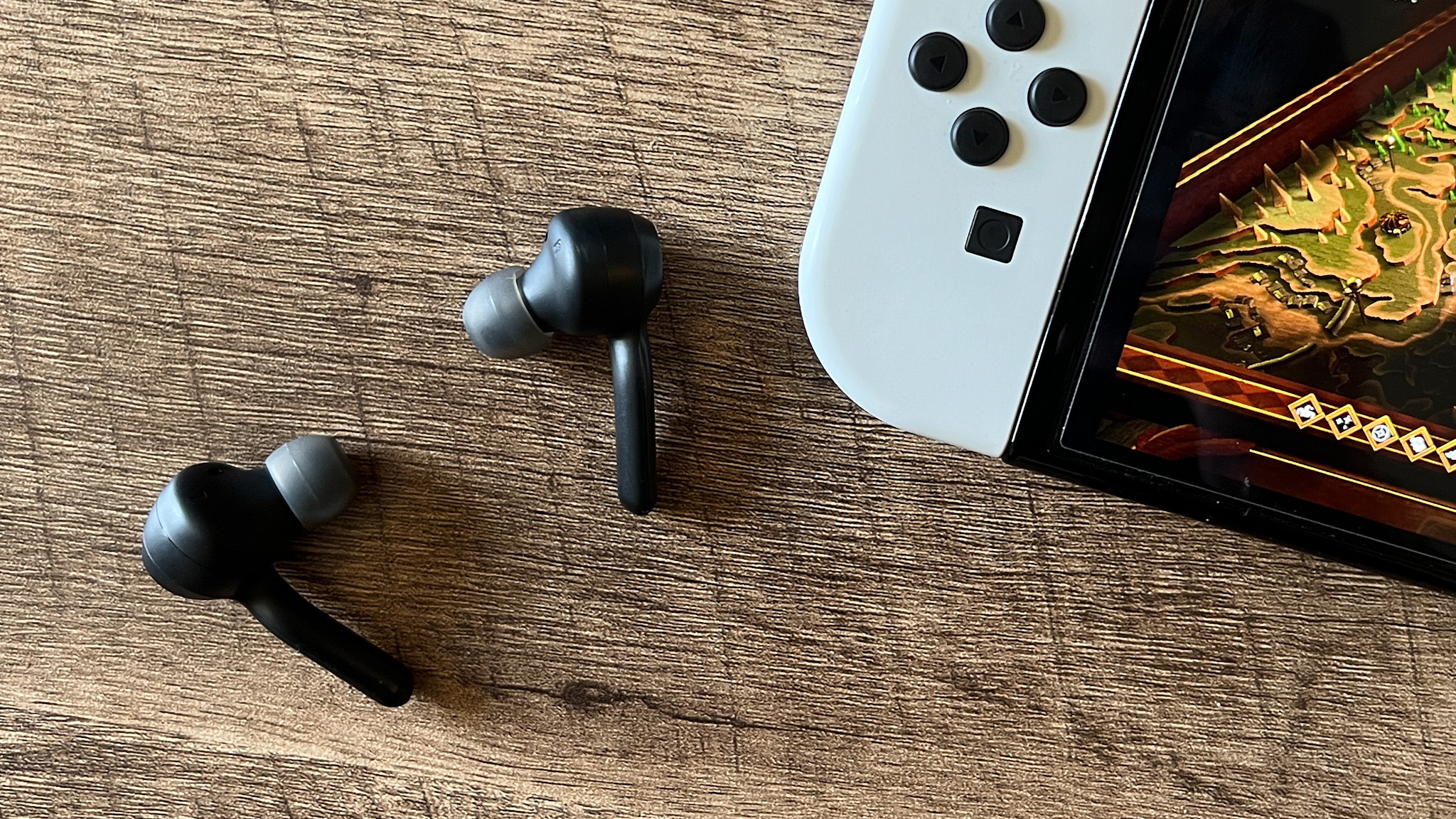GamesRadar+ Verdict
The Turtle Beach Scout Air gaming earbuds offer a commendable set of specs and features, and perform well across general everyday use. While they can't replace an all-in-one gaming, entertainment, and music set of buds due to their flattening in the lower ranges, they offer a well-balanced soundscape overall as well as a low latency connection.
Pros
- +
Overall soundscape is impressive
- +
Low latency connection
- +
Touch gestures work well
- +
No overblown bass
Cons
- -
Cheap feeling build materials
- -
Low range feels flattened in certain situations
- -
Mic is muffled
Why you can trust GamesRadar+
With the advent of Microsoft's Cloud Gaming across mobile devices, and Nintendo finally flipping the Bluetooth switch, more and more gaming earbuds are hitting the shelves. The Turtle Beach Scout Air buds are the brand's first foray into true wireless, not counting the console-specific Recon Air earpieces. At $99.99 / £89.99, however, these buds are facing some stiff competition from wider audio-focused brands outside of the gaming space, and the threat of the slightly pricier Razer Hammerhead model to boot.
We put the Turtle Beach Scout Air earbuds to the test over the course of four weeks, to check out the on-the-go experience for those who don't want to lug a full gaming headset around.
Design
Opening up the Turtle Beach Scout Air, I was a little let down by the build quality of the case that presented itself to me. This is a particularly cheap-feeling set of materials, with thin plastic that quickly picks up smudges and a hollow feel befitting of a far less expensive set of buds, which was disappointing. There is a nice snap to this magnetic lid, and I was relieved to find a flat bottom rather than an oblong / rounded shape. That meant keeping the buds standing upright on a desk while updating the firmware or pairing was easier than expected.
The buds themselves feature the signature Turtle Beach logo on the back of each side, panelling the touch-sensitive controls on the main bud, with a particularly long stem to accommodate for the dual mics running down the side. An LED indicator light on the inside of the bud shows the current pairing status, and you'll find three silicon tip options in the box to find the right fit.
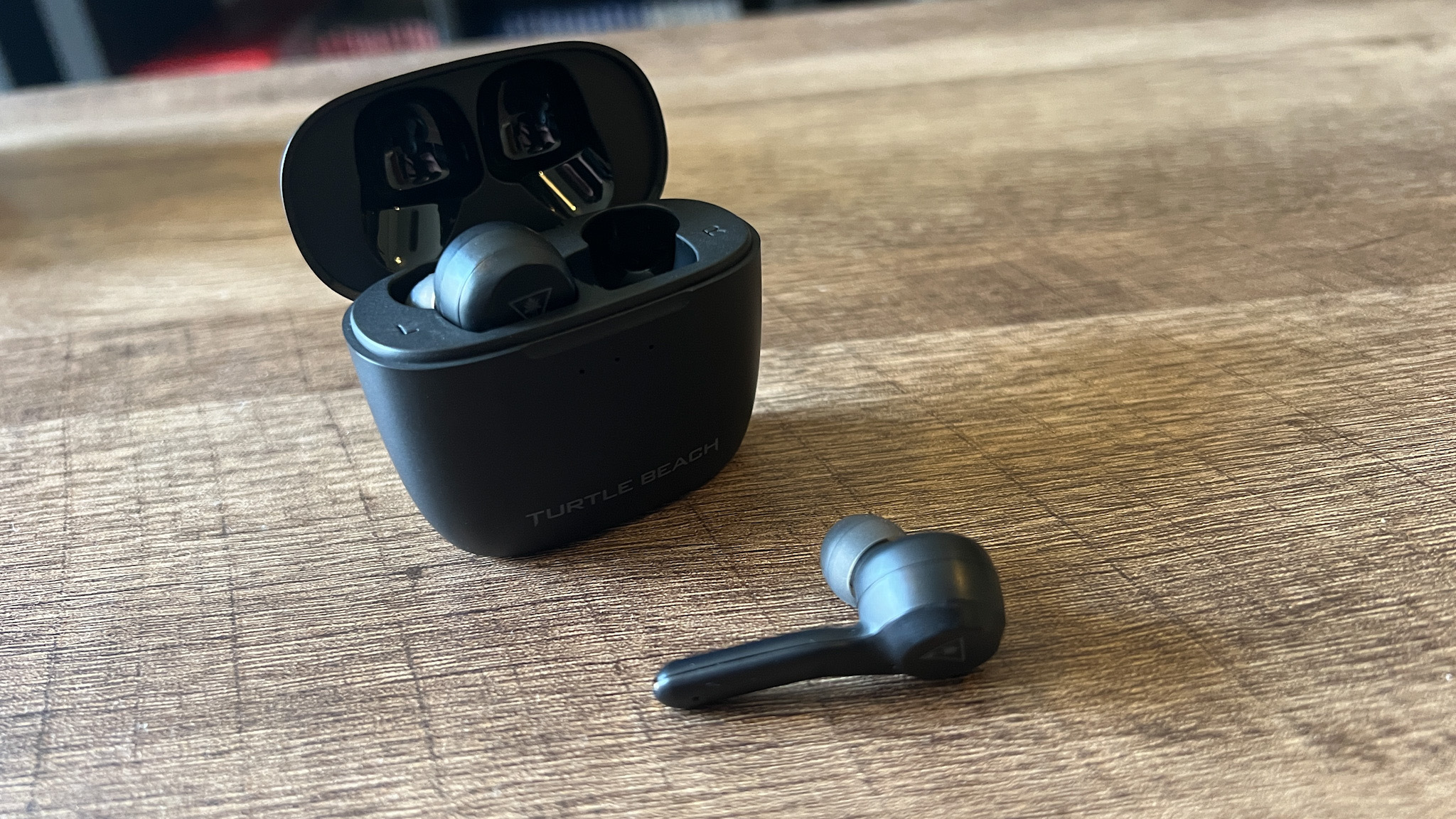
Again, the cheaper plastic material is present on the buds themselves. While that does mean they're particularly lightweight in the ear, this plastic is going to reveal every scuff and scratch as soon as it appears.
The overall shape and size of both the earbuds and case make them easy enough to store in a small bag or Nintendo Switch case, though the case is bulkier than the likes of the AirPods Pro or Sony WF-1000XM4.
Features
For all those cheap materials, though, the Turtle Beach Scout Airs report a solid resume of features. With a low-latency Game Mode, a range of EQ presets, and customizable touch gestures all configurable from the Turtle Beach app, there are plenty of extra functions baked in here compared to the slightly more expensive Razer Hammerhead. The Turtle Beach Scout Air buds also boast a pair of dual mics, though more on the actual performance of these later. Suffice to say, you'll be able to get by in a pinch.
Weekly digests, tales from the communities you love, and more
The 20-hour battery life doesn't quite match that of the Hammerhead (touted by Razer to last up to 32.5 hours with no RGB or ANC - neither of which the Scout Air provides anyway). However, Turtle Beach's suggestion of six hours of battery life from each bud rang true in our own testing and sits towards the top of the industry standard at this price point.
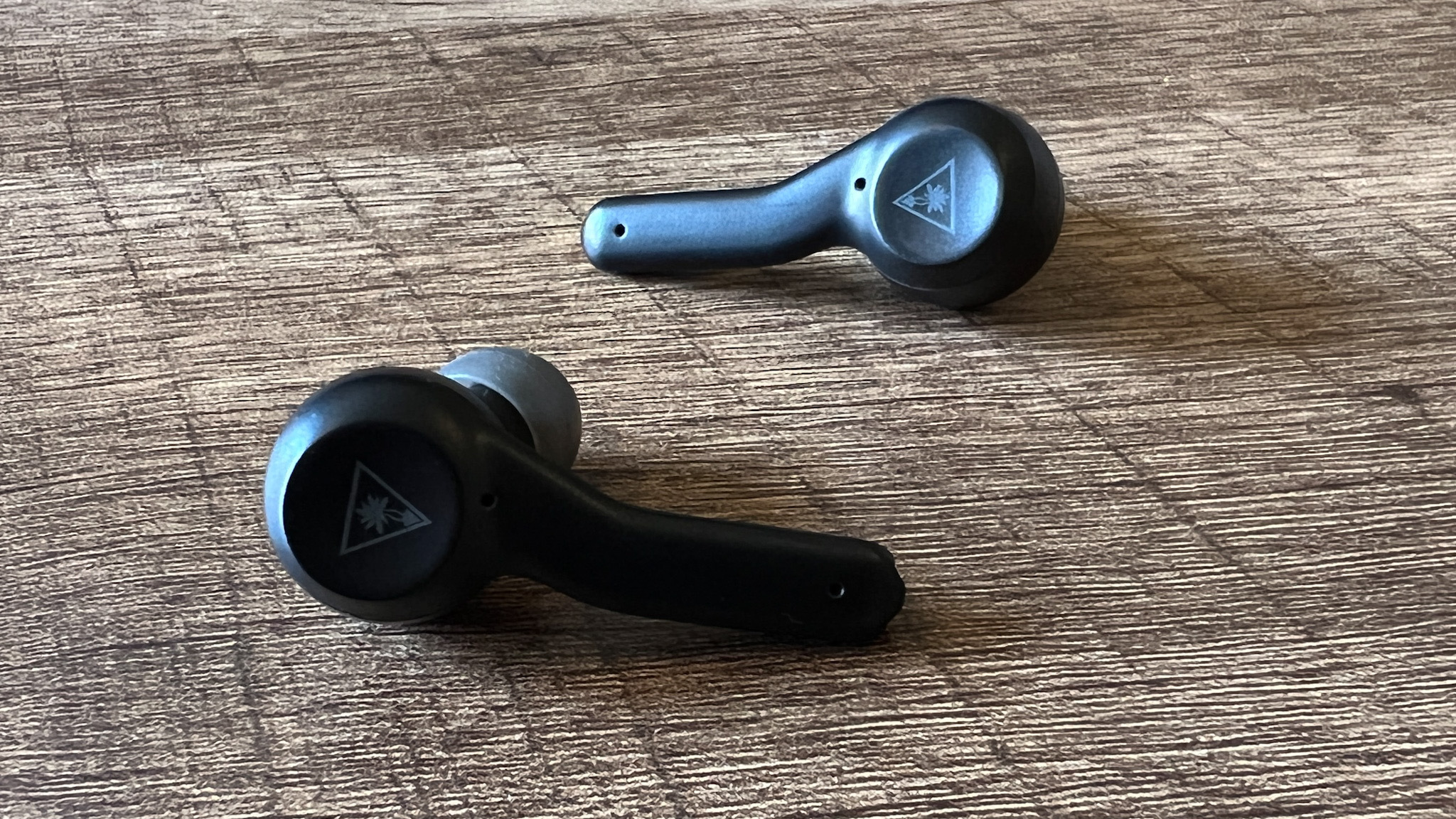
The Turtle Beach Scout Air are a little more geared towards wider use, though. When it comes to tunes, I was glad to find tap gestures supporting playback and doing so without too much setup or mastering finnicky responses. You'll also be able to keep a clear eye on your battery through the Turtle Beach app as well.
Moving between devices was a little tricky. These buds don't support multiple connections, so I needed to forget them as a device on my iPhone 13 Pro in order to use them as a Nintendo Switch headset, before going through the whole pairing process again. However, pairing, in general, was quick and easy - even if it did require the use of the official app to fully complete.
Performance
The overall audio profile of the Turtle Beach Scout Air was impressive, with plenty of space for detail in the mid and higher ranges, and none of the overblown bass some would expect from in-ear buds. My Crash Bandicoot N. Sane Trilogy runs offered up punchy melodies and crisp dialogue yelps on Nintendo Switch, and I was particularly impressed by the handling of a swirling, multi-layered soundtrack against the shuffling of cards in Hand of Fate 2 as well.
Doom didn't yield the crackly bass that might trip some cheaper buds, though I did start to notice a flattening of the lower tones when switching gears to a heavier gun. This muffled bass range persisted throughout Rise of the Tomb Raider on PC, and into my testing on music and entertainment as well. While the higher-toned guitars and mixed vocals of Half Moon Run offered up plenty of detailing in a well-rounded soundscape, drum kicks lacked the oomph otherwise offered by the AirPods Pro. Similarly, heavier Grandson and My Chemical Romance tracks never felt fully shaped out and sounded flat by comparison.
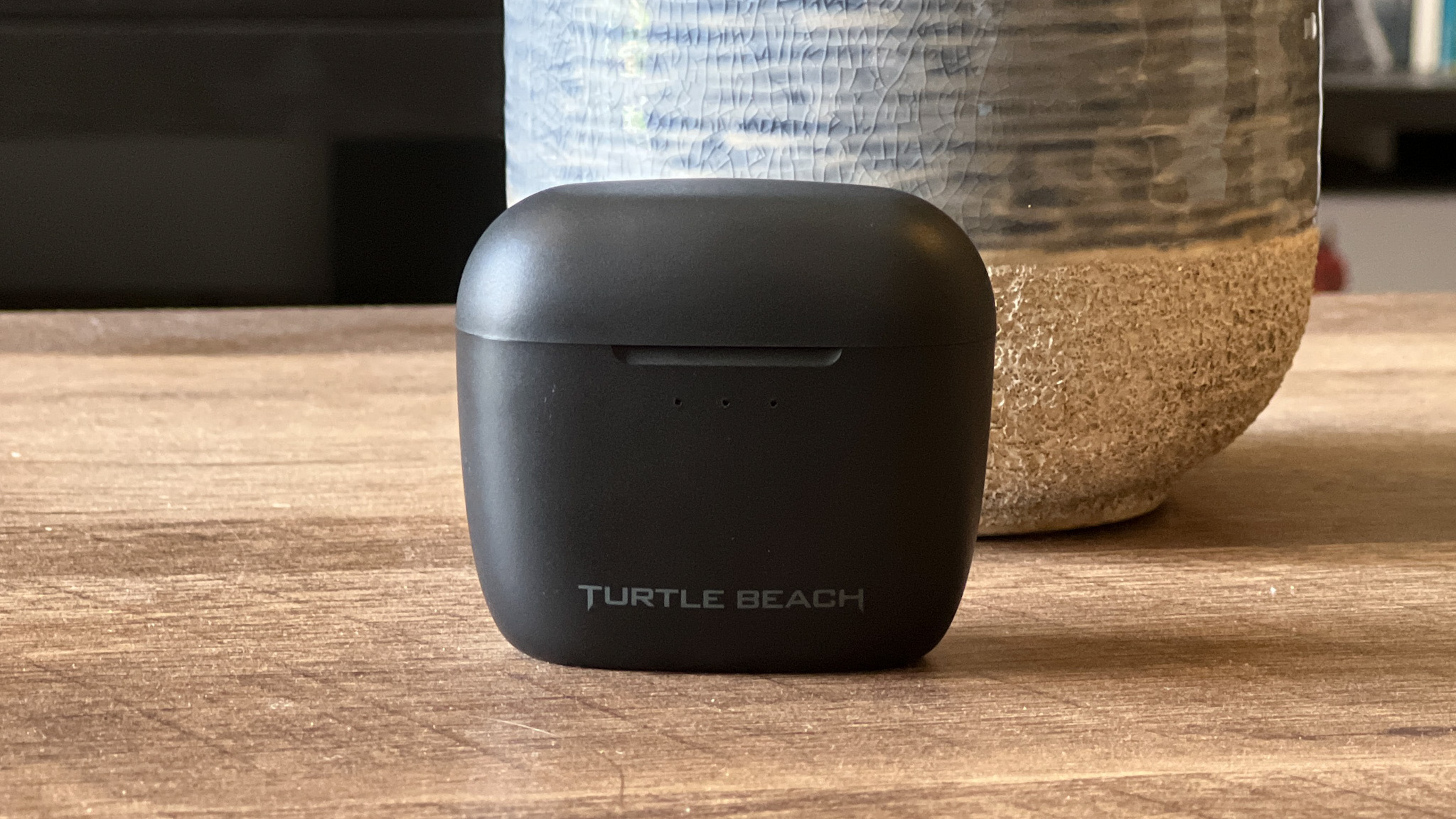
That said, for the vast majority of games I was impressed with the overall soundstage on offer. I was grateful for a slimmer baseline in more open-world settings and was able to pick out footsteps and doors in competitive titles like CS:GO as well. It's also worth noting that I never noticed any latency in these faster titles on PC or Nintendo Switch either.
The mic, however, doesn't quite live up to the standard set by the rest of the experience. During video calls, my pals struggled to pick out my voice from a busier background, and even in a less busy situation, mic audio comes across as muffled and far away. It will see you through everyday use if you need to pick up a quick call, but I wouldn't rely on it for more intense competitive gameplay or for regular meetings.
Should you buy the Turtle Beach Scout Air earbuds
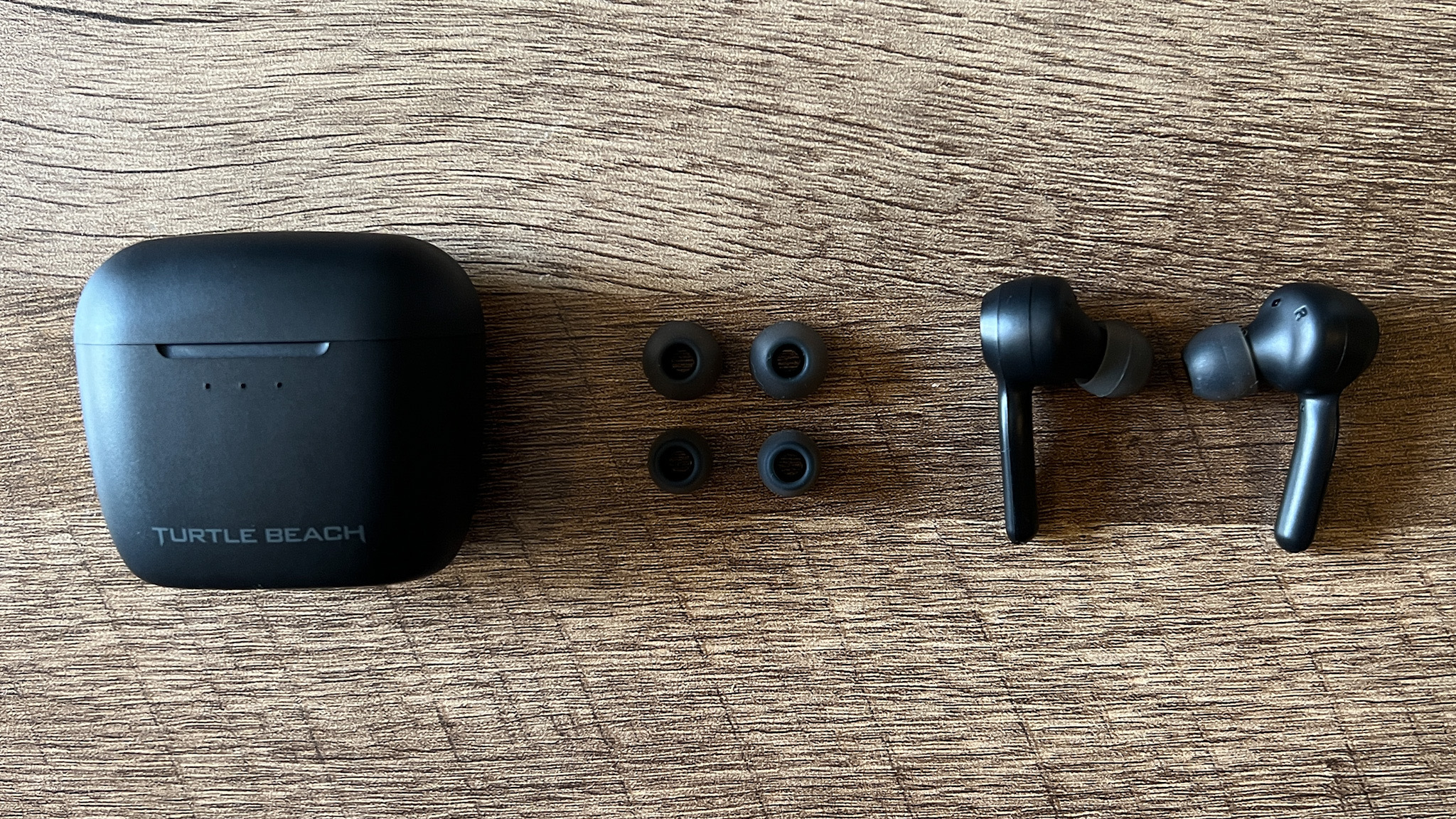
The Turtle Beach Scout Air is a solid set of low-latency buds for those after a more discrete pair of headphones as opposed to a bulkier wireless headset. If you're on the hunt for an all-in-one solution and like a bit of bass in your tunes, though, I would recommend looking elsewhere. Sure, you're not getting gaming-specific latencies in a pair of, say, AirPods, but the flattening of the lower ranges won't suit heavier listeners.
The Razer Hammerhead is the next step up from the Turtle Beach Scout Air, and do offer other features like RGB and active noise cancellation, as well as a more premium finish, for $129.99 / £129.99. While you're losing touch gestures, you're still getting that 60ms low latency and boosting your battery life for just $30 / £40 more. If you can spring the extra cash, I'd recommend upgrading here. If you're up against a $100 budget, the Scout Airs do a commendable job, though at $99.99 / £89.99, it's worth waiting for these to go on sale for the best value for money.
If, however, you're not concerned with picking up a wireless set of buds, you can save plenty of cash by opting for the cheaper Roccat Syn Buds Core or HyperX Cloud Earbuds.
How we tested the Turtle Beach Scout Air
I used the Turtle Beach Scout Air earbuds over a period of four weeks across Nintendo Switch, PC, and using Xbox Cloud Gaming on an iPhone 13 Pro. During this time, I was testing primarily on Hand of Fate 2, Crash Bandicoot N. Sane Trilogy, and Doom on Nintendo Switch, and Rise of the Tomb Raider, and CS:GO on PC. I also trialled the buds using Forza Horizon 5 running through Game Pass on iPhone as well.
I tested the Scout Airs across a range of music genres, listening to Grandson, My Chemical Romance, Half Moon Run, and Oh Wonder to compare high and low ranges. These buds were also my primary driver for a series of Criminal Minds sessions run through an iPad Air as well.
You can read more about how we test gaming headsets as well as how we make all our recommendations in the full GamesRadar+ Hardware Policy.
We're also rounding up plenty more options for console users, like the best PS5 headsets and the best Xbox Series X headsets. Or, for a budget buy, check out the latest cheap gaming headset options on the market.

Managing Editor of Hardware at GamesRadar+, I originally landed in hardware at our sister site TechRadar before moving over to GamesRadar. In between, I've written for Tom’s Guide, Wireframe, The Indie Game Website and That Video Game Blog, covering everything from the PS5 launch to the Apple Pencil. Now, i'm focused on Nintendo Switch, gaming laptops (and the keyboards, headsets and mice that come with them), PS5, and trying to find the perfect projector.
